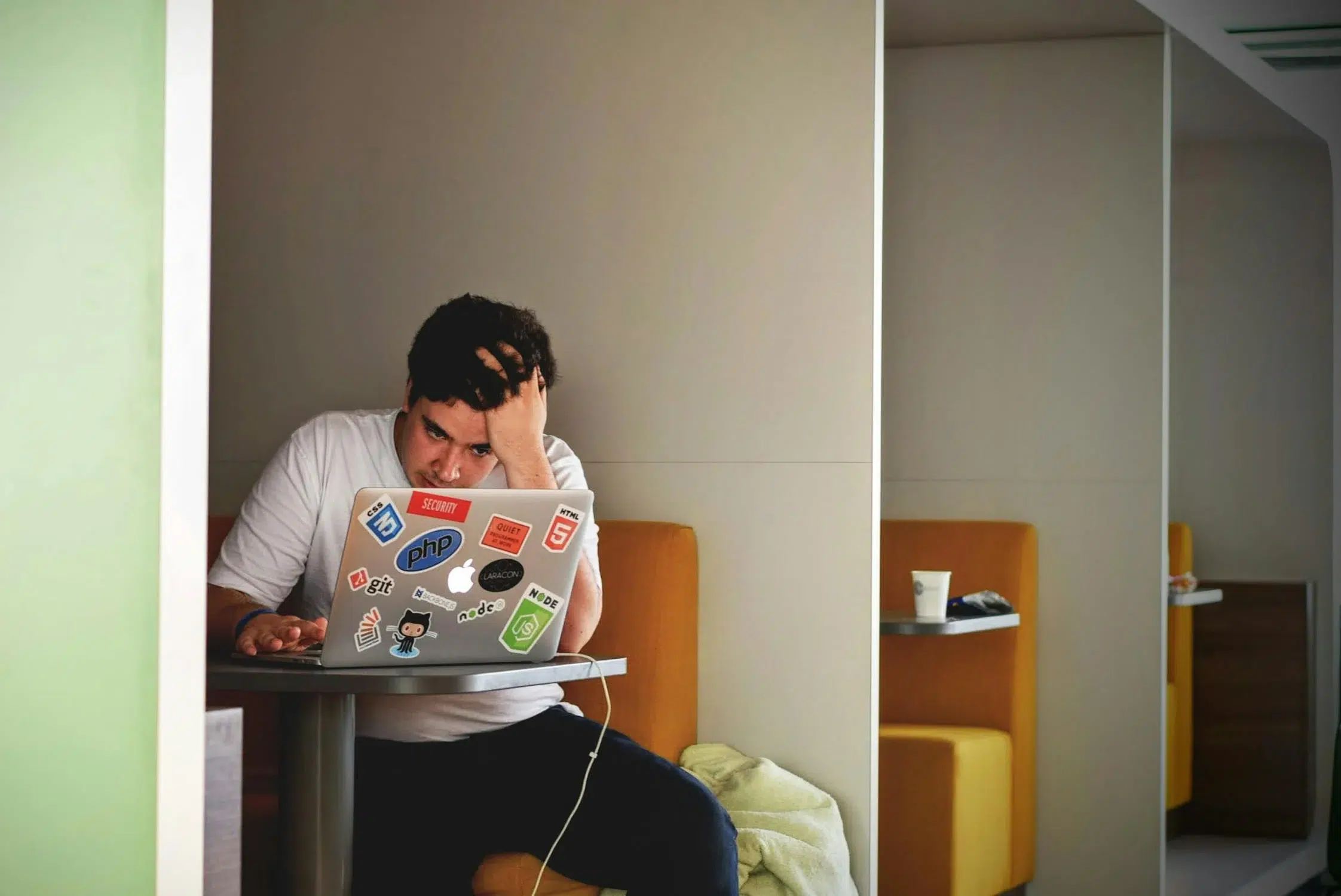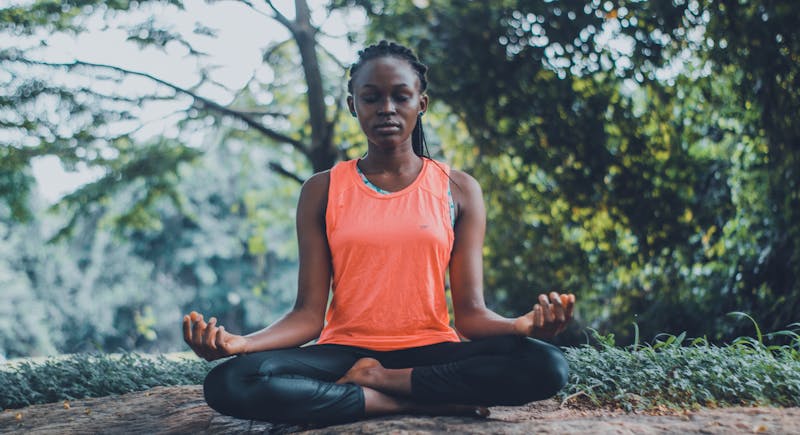In today’s fast-paced world filled with distractions, maintaining focus and concentration has become a valuable skill.
Whether you’re a student striving for better grades, a professional aiming to boost productivity, or simply seeking to be more present in your daily activities, improving concentration is the key.
In this guide, I’ll explore seven practical and straightforward steps that can help you enhance your ability to stay focused and accomplish your goals with ease.
These steps can be easily incorporated into your daily routine, making the journey to improved concentration both accessible and achievable.
In this article, you’ll learn 7 useful ways to improve your concentration and become more productive in 2025.
7 Useful Easy Steps To Improve Concentration In 2025
1. Use Pomodoro Technique
Pomodoro is a time management technique that allows you to break your work into 25-minute chunks. Each 25-minute time block is called Pomodoro.
You work intensely focused for 25 minutes and take a 5-minute break. You continue this for 4 Pomodoro blocks, and then you take a long break of 25 to 30 minutes.

Source: Pexels.com
The Pomodoro technique creates an urgency of limited time (25 minutes) that allows the brain to become alert and focused. Then, you reward it with a 5-minute break.
Since our brains easily signifies immediate rewards, giving a short break after 25 minutes of work makes it easy to focus for the next 25 minutes, and the loop continues.
A study published in the journal Cognition revealed that short breaks help you concentrate better on your work than working for prolonged periods.
Longer work sessions result in mental boredom that decreases the focus, and the mind starts distracting.
So, a work-break-work pattern used in Pomodoro helps you stay away from the distraction traps.
2. Start Your Day with Exercise

Source: Pexels.com
In 2019, the British Journal of Sports Medicine discovered that starting your day with exercise increases concentration, visual learning, and decisiveness.
Morning exercise increases BDNF levels in the brain. BDNF is a protein that improves brain cell regeneration and concentration.
Morning exercise improves your alertness level because Cortisol hormone levels increase. Cortisol is also called the alertness hormone.
When you exercise, your heart beats rapidly, which increases blood flow in the body. Increased blood flow improves oxygen and nutrients supply to the heart and brain.
To improve concentration, you need not work out for two hours in the morning. Instead, you can start your day with 20 minutes of light stretching, a brisk walk, yoga, or pranayama.
Exercises and yoga poses to improve concentration
#1. Vrikshasana (Tree Pose)
Vrikshasana improves neuromuscular coordination, concentration, and alertness. It also strengthens legs and hips and helps with sciatica (a nerve pain that travels from the lower back to the leg).
#2. Setubandhasana (Bridge Pose)
Setubandhasana improves blood circulation, calms the mind, and helps in mild depression.
Bridge pose also helps in stimulating the lungs, thyroid glands, and abdominal organs and improves digestion.
#3. Anulom Vilom Pranayama (Alternate Nostril Breathing)
Anulom Vilom relieves stress and anxiety, improves focus, willpower, and patience, and improves brain, respiratory, and heart health.
#4. Squat
Squats build new brain cells, strengthen legs and core, reduce the risk of injury, and improve balance and athletic ability.
#5. Skipping Rope
Skipping rope calms the body, increases concentration and coordination, improves balance, and strengthens the heart.
3. Do Mindfulness

Source: Pexels.com
Even 10 minutes of mindfulness meditation daily for 8 weeks can reduce stress and improve concentration, memory, and alertness in the participants.
Mindfulness means focusing your attention on the present moment.
According to experts, 47% of the time, we are lost in our thoughts. We do our routine chores in autopilot mode.
When we do any task repeatedly, it’s saved into our subconscious mind, which allows us to do that task without giving it full attention.
For example, if you go to the office by driving yourself, you will focus 10% on driving while 90% of your mind will be on yesterday’s argument with your manager.
Mindfulness is the opposite.
It’s like slowing down your brain and observing what’s happening in the present moment. When living in the present moment, you protect your brain from exhausting overthinking.
How to do Mindfulness Meditation
#1. Deep breathing
- Sit comfortably on a chair, yoga mat, or any mattress.
- Keep your spine straight.
- Close your eyes.
- Take 3-4 deep breaths quickly.
- Now again, take a deep breath very slowly and observe the air going inside, starting from your nostrils and then expanding to your belly.
- Now release as slowly as you can, again focusing on the exhale of air.
- That’s it. In the beginning, repeat the steps at least five times and gradually increase the time to 10 minutes (at least). You can use a timer for that.
#2. Listen to mindfulness meditation audio
You have to plug in your earphones or headphones, play a mindfulness meditation audio, and follow the steps as mentioned in the audio.
However, sit comfortably and keep your back straight.
One useful mindfulness meditation apps is Headspace Calm and if you are looking for a free meditation app go with the Mindfulness app.
All these apps are available on Apple’s App Store and Google’s Play Store.
#3. Practice silence meditation (Vipassana)
- Simply sit comfortably and keep your spine erect.
- Start by observing your breath – inhale and exhale.
- Put a 1-minute timer initially.
You can start with whatever time you feel comfortable doing even 1 minute daily but increase the time gradually such as increasing 1 minute every 2 days.
Note: Whenever thoughts come into your mind, don’t feel panic. Just shift focus back to breathing until your timer rings.
4. Do One Thing at a Time
We think multitasking improves productivity, but our brain is not designed for multitasking.
We assume that multitasking is actually serial tasking, which means shifting our attention from one task to another. This repeated attention shift requires extra effort to concentrate fully.
For example, if you are watching a movie and you get a phone call. It might seem like you are multitasking (watching the movie along with attending a phone call), but you may notice that when you are talking on the phone, you will miss some movie dialogue.
And as soon as you focus on the movie, you will miss some call conversation parts. This happens because our minds can focus on one thing at a time.
A study published in Science Daily revealed that our brains can focus on one task at a time. Juggling between multiple tasks affects attention and focus.
Single-tasking allows you to give your full attention to one task at a time, increases your concentration and quality of work, and makes you more productive.
5. Train Your Brain

Source: Pexels.com
Our brain learns and adapts to new things faster when we are kids because of new cell formation. But as we age, the new brain cell formation slows down.
You can increase the new brain cell formation by increasing oxygen supply and stimulating certain brain parts like the cerebral cortex and hippocampus.
You can do this by paying attention to a certain object for some time or pushing your brain to work on specific thought processes like problem-solving and creative thinking.
Let me show you two popular ways to train your brain for better concentration. Deep focus and sharp memory.
A. Play Brain Games
A 2015 research conducted on 4000 plus adults revealed that playing brain games like Sudoku for 15 minutes daily for 5 days a week improved concentration, short-term memory, and problem-solving abilities.
Our brain appreciates immediate and unexpected rewards. When we play such brain games and solve a puzzle, the immediate reward of winning releases Dopamine in the brain.
Dopamine is a happy hormone that controls mood, memory, concentration, and learning abilities. Brain games help in releasing adequate amounts of dopamine to improve our memory and focus.
Games that help in improving focus are –
- Chess
- Sudoku
- Crosswords
- Memory Games
- Jigsaw Puzzles
- Word Scrambles
B. Do Concentration Workout
If you have trouble focusing, you can also do concentration workouts. Concentration exercises involve devoting full attention to an activity for a set period.
Some examples are –
- Suck on a sweet candy and resist the urge to bite it. Please pay attention to the flavor on your tongue and how long it takes to eat it completely.
- Draw something you like or doodle for 10 to 15 mins.
- Tossing a small ball with another person for 5 to 10 mins
- Try not to blink your eyes or blink as little as possible for 3 to 5 mins.
6. Set Your Environment

Source: Pexels.com
Your work environment plays an important role in concentration. The comfortable environment includes a well-lit room, comfortable sitting, and ideal room temperature.
Let’s discuss further.
#1. Bright lighting conditions
Brightly lit spaces improve concentration, memory, and alertness compared to regular room light. That’s why bedrooms have soft light, whereas offices contain bright light.
If you are working, try to set up a light above the working desk that will help you keep alert and focused while working.
#2. Comfortable sitting arrangement
Make sure your chair is comfortable and at an adequate height, according to the desk.
The uncomfortable sitting arrangement results in back pain or neck stiffness that reduces focus as well as productivity.
If you are working from home try to set up a separate area as your workspace, so when you start sitting in a particular area for work, your mind will automatically start focusing as it will start differentiating between workspace and living space.
#3. Room temperature
As per a study by Cornell University, 21 degrees Celsius to 25 degrees Celsius is the ideal temperature range that enhances your concentration, and people make fewer mistakes.
Make sure your room temperature is within the ideal range. However, you can adjust it according to how your body feels comfortable.
#4. Remove distractions
As discussed, distractions reduce our focus. You can use the below techniques to avoid distractions.
A. Listen to Music
You can use light instrumental music to avoid other background noises that create distractions. Music or any other ambient sound that subsides the effect of other noises is called white noise.
You can also use apps that create uniform and soothing sounds, such as ocean waves or falling rain.
B. Keep smartphone aside
The biggest distraction in today’s world is our phones. When you start work that requires deep concentration, try disabling notifications.
If you are working from home, try putting the smartphone in another room until you complete your task.
C. Start working early
If you are working from home and don’t have any dedicated work timings, you can try to get up early to start your work when others are sleeping.
That will give you distraction-free time to concentrate on your work fully.
#5. Put pictures
Adding natural landscapes or wildlife scenes helps improve focus. Place the scenery where you can easily see it while working.
7. Get Adequate Sleep

Source: Pexels.com
Lack of sleep can also interrupt concentration, memory, and attention because the brain needs rest to re-energize. It will not work at its best if you don’t give it enough rest.
Multiple factors like hectic schedules, health issues, or other circumstances like having a toddler make it difficult to get enough sleep, but sleeping close to the required hours is necessary.
An adult requires 7 to 8 hours of sleep per night.
If you are not able to get full sleep at night, try taking a short nap of 15 minutes to 30 minutes after returning from the office or in the afternoon (if you don’t have work timing commitments) to give your brain some rest.
FAQs
Why is concentration important?
Concentration is essential for productivity and efficiency in various tasks, from work and studying to problem-solving. It allows you to stay focused and complete tasks more effectively.
Can anyone improve their concentration?
Yes, anyone can work on improving their concentration with practice and the right strategies. It's a skill that can be developed over time.
What are some common distractions that hinder concentration?
Common distractions include smartphones, social media, noisy environments, multitasking, and inner distractions like stress and anxiety.
How can I create a distraction-free workspace?
Clear clutter, organize your workspace, turn off notifications on your devices, and use noise-canceling headphones if necessary to minimize distractions.
Can meditation and mindfulness techniques help improve concentration?
Yes, meditation and mindfulness practices can be effective in training the mind to focus and reduce distractions. They help build mental resilience and enhance concentration over time.
You may also read:
- Top Best Jim Kwik Quotes From Limitless
- E-Learning Quotes: Motivational Quotes for E-Learners
- Sons Of Anarchy Quotes: Most Iconic Lines From The Show
- Naruto Quotes: Will They Shape Your Ninja Way?
- Jessie James Quotes: Most Famous Quotes Of All Time!
- How To Build A Schedule For Effective Learning That Brings Results
Final Thoughts: Useful & Easy Steps To Improve Concentration
By implementing these seven practical and easy steps into your daily life, you can gradually enhance your focus and productivity.
Remember that building better concentration is a journey that takes time and practice, so be patient with yourself. W
Whether you’re a student, a professional, or anyone looking to make the most of your time and attention, these strategies can pave the way for a more productive and fulfilling life.
Stay committed to these practices, and you’ll find yourself achieving your goals with greater ease and clarity.
